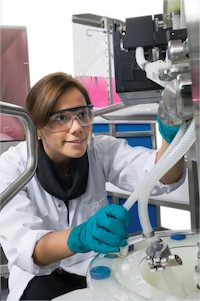 The challenges posed by the COVID-19 pandemic in 2020 brought about many unprecedented lessons and promising developments in the biopharmaceutical industry. Last year in particular reenforced the need to reapproach optimization and flexibility for all bioprocesses, as well as emphasized the importance of life-saving products such as vaccines.
The challenges posed by the COVID-19 pandemic in 2020 brought about many unprecedented lessons and promising developments in the biopharmaceutical industry. Last year in particular reenforced the need to reapproach optimization and flexibility for all bioprocesses, as well as emphasized the importance of life-saving products such as vaccines.
To shed light on what 2021 could have in store for the industry, let’s take a look at the Bioprocess Development Forum articles from 2020 that readers found most interesting and relevant during such an eventful year.
Spotlight on Vaccines and Viral Vectors
At the forefront of many minds in 2020 going into 2021 is vaccine development and manufacturing. Among the many vaccine challenges in relation to the urgency provoked by COVID-19 are safety and the ability to scale up the manufacturing process. Scaling up viral vector and virus manufacturing processes prompts the need for discussion on general guidelines for how to go about the scale-up process, which was of particular interest to Bioprocess Development Forum readers.
On the matter of viral vector manufacturing, 2020 experienced an increase in demand for scalable technologies for viral-vector manufacturing facilities, which speaks to the need for flexible facilities equipped for multi-product clinical and commercial manufacturing in the new year and beyond. Addressing pain points for lentiviral vectors, which are used as a common vehicle to deliver genetic material in chimeric antigen receptor (CAR) T-cell therapy and gene therapy applications, by creating a modern workflow that reduces timely manual labor, was also highly relevant in 2020.
Improving Process Development Efficiency
The COVID-19 pandemic has highlighted just how desperately effective approaches to improve efficiency in process development are needed for both developers and manufacturers alike. Shrinking timelines and an increasing number of drug candidates and corresponding experiments makes these approaches more necessary than ever. One efficient method is high-throughput process development (HTPD), which streamlines various bioprocess workflows to enable enhanced efficiency with parallelization and automation of experiments.
Another “smart” way to address these challenges involves mechanistic modeling, a collection of approaches to improve process outcomes and speed up process development. Tobias Hahn, PhD, co-founder and CEO of GoSilico, took time to discuss the current benefits observed using mechanistic modeling for many applications in bioprocess development, as well as its future impact as a game changer in the industry.
Speaking of game changers, Fibro chromatography, a recently launched chromatography platform, has been shown to enable purification cycles in minutes instead of hours. This results in higher throughput in research and process development, allowing for new opportunities for cost efficient, single-use chromatography in large-scale commercial manufacturing.
Another prominent topic of the year was process variability, which can significantly impact biomanufacturing outcomes and is influenced by various factors, including variations in process parameters or raw materials. More specifically, the effect of chromatography resin attributes and how to identify which parameters and interactions to focus on during process characterization studies proved to be of great interest.
Perspectives on Process Intensification
While continuous operations are the standard for many manufacturing industries, the move from batch to continuous bioprocessing has been slow across biopharma. For various reasons, industry-wide adoption of continuous bioprocessing technologies may not be on the immediate horizon, but contract manufacturing organizations are expected to lead the way in testing and potentially adopting process intensification technologies.
Moving from optional to essential bioprocess components, one process the industry often relies on for the cost-effective production of therapeutics is process chromatography, particularly for monoclonal antibodies (mAb) and gene therapies. This makes knowing the current status of process chromatography and what the future holds that much more important going into 2021, as highlighted by Cytiva Business Leader Dr. Oliver Hardick.
On the note of mAbs, another area of interest in 2020 was strategies to improve the mAb manufacturing process and streamline overall bioprocessing operations. mAb manufacturing productivity can be greatly improved by optimizing the buffer and media preparation using innovative approaches that cut back on the time and effort associated with these components. These approaches include pre-weighed, ready-to-dispense solid packaging systems, ready-to-use diluted buffers, and others.
Bioprocess Development Forum readers also focused on upstream predictability and how companies are exploring process intensification efforts at every stage of upstream processing, which drives improvement in areas of the industry such as single-use technologies to support new process templates. Experts anticipate this trend to extent well past 2021.
The end goal of this focus is to cut costs through further understanding and integration of both upstream and downstream processes, which then incites demand for more training and career opportunities from biopharma professionals now and into the future.
More Popular Articles of 2020
The following are some of the year’s best articles from Bioprocess Development Forum:
Gene Therapies Push Viral Vector Production
Mapping a Route for Cell and Gene Therapy Process Development